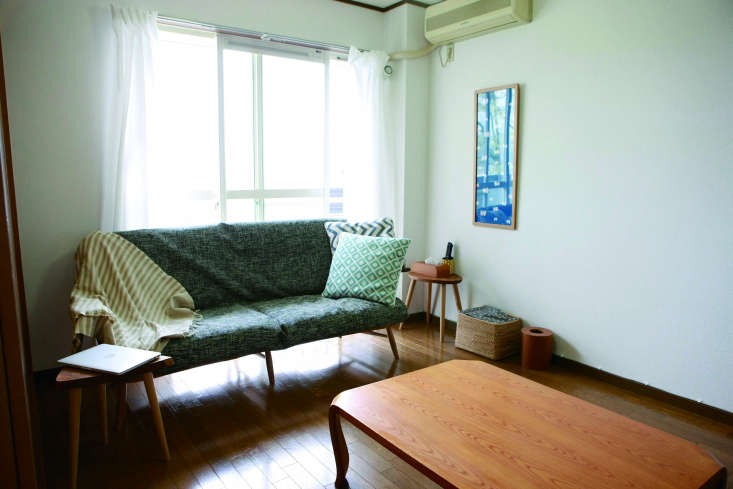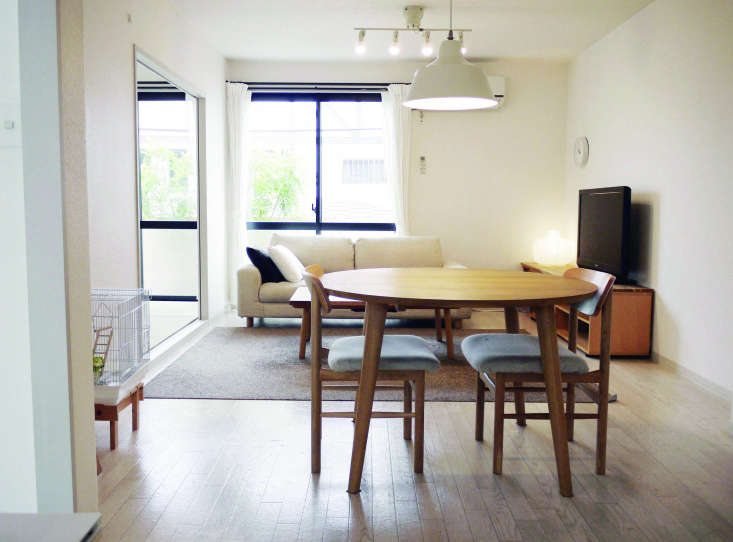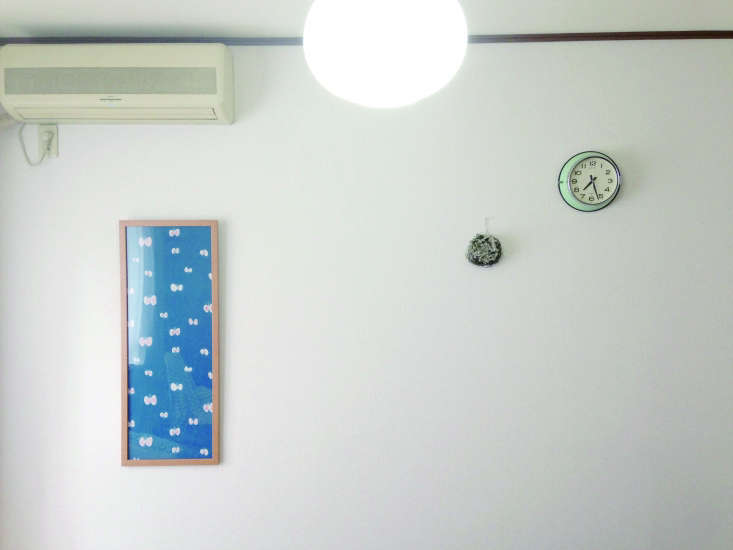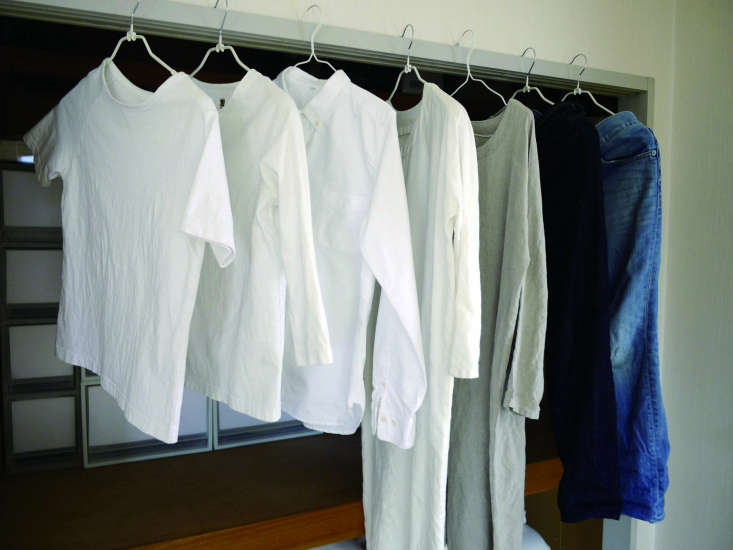
Minimalism has lots of rules: Do this, don’t do that; keep this, throw everything else out. Which is why we were happy to come across Goodbye, Things: The New Japanese Minimalism written by Fumio Sasaki, who is not a minimalism expert but a regular guy living in Tokyo who used to live in an apartment cluttered with stuff (books, CDs, beer cans, electronics), like many of us do. He had lots of things, “but in the end I didn’t really cherish any of them,” he writes in the book—and they were making him stressed and unhappy. “I lived in this apartment for ten years, and during that time, it seemed like my life had stopped moving forward.”
That is, until he decided to get rid of most of what he owned: his books, CD collection, mattress, table, TV, two couches, and knickknacks. Now he lives in a 215-square-foot apartment and owns 150 items, from his desk and roll-up mattress down to his toothbrush and “the bottles of condiments in his kitchen.” (And his book, available in the US, has sold 150,000 copies in Japan.) Call it reasonable minimalism: We asked Sasaki for advice on paring back what you own. Here’s what he says.
Photography and excerpts from Goodbye, Things, courtesy of W. W. Norton & Company.
1. Gain a clear understanding of why you can’t part with your things.

“Take a minute to really focus on each item you can’t part with and ask yourself why. Is it because it was expensive? Is it because you feel guilty about throwing it away? Are you ashamed that you were never able to make good use of it? Do you feel bad for the person who gave it to you? Does it feel like you’re throwing away a fond memory that is attached to it? Is your vanity preventing you from parting with something? Or is it just easier to leave it where it is? Don’t worry if you can’t discard your possessions all at once. The important thing is to ask yourself why you may be reluctant to part with some of your belongings. You might be surprised by the answers.”
2. Let go of the idea of “someday.” Things we don’t need now will probably never be needed.

“When we buy an electrical appliance, it usually comes with a lot of attachments. Think of all those parts for your vacuum cleaner that you’ve never used. What’s that little screw for, anyway? You keep all those parts and wires because you think you might need them ‘someday.’ I don’t know about you, but I’ve never actually used a warranty. They now go straight into the trash can.
“We’re always thinking about ‘someday.’ We keep empty cookie tins or beautiful paper bags, thinking they might come in handy someday. We hold on to foreign language textbooks because we’re going to start studying someday. We’ll get to all those hobby items and tools once things quiet down. Someday. That’s what we tell ourselves. But we know by now that that time is probably never going to come. May I make a gentle suggestion? Let go of ‘someday.’ Things we don’t need now will probably never be needed.”
3. Discard any possessions that you can’t discuss with passion.

“Why do we own a certain product when there are so many wonderful things to choose from? There had to be a good reason why it had to be that particular item. An item chosen with passion represents perfection to us. Things we just happen to pick up, however, are easy candidates for disposal or replacement. We’re bound to be less satisfied with all those other things we’ve unconsciously accumulated. I think our lives are better when our belongings stir our passions as long as we stick to owning things that we really love, we aren’t likely to want more.”
4. Be social; be a borrower.

“The desire to hold on to things can also be seen as a desire to avoid troubling someone else for anything. But all this does is shut you off from the world. If you should suddenly have a desperate urge to see your old yearbook, all you have to do is contact one of your old friends and ask them to let you see it. Though you might feel like you’re bothering them, in reality they’ll probably welcome the chance to spend some time together reminiscing. Anyone who gives you the cold shoulder for a nostalgic request like that isn’t really a friend. As long as you remember to express your feelings of gratitude, you aren’t going to be a nuisance at all. If anything, your relationships will only deepen.”
5. If it’s not a “hell, yes!” it’s a “no.”

“When we think about discarding something, sometimes we get stuck weighing its pros and cons. Consider this, though: When we go back and forth like this it’s because we think that the two choices have equal value. We’re not trying to decide between a gift of $10 or $100, for example—we’re deciding between $1 or $1 and a penny. If that’s about the extent of the difference we’re facing, we might as well be brave and say goodbye to the item. If you’re thinking about reducing the number of things that you own, then I recommend discarding something as soon as you start wondering whether or not to do so.
“There’s a phrase that I like that goes, ‘If it’s not a ‘hell, yes!’ it’s a ‘no.’’ When we ask ourselves, ‘Should I get rid of this?’ we can turn that around: ‘If it’s not a ‘hell, no!’ it’s a ‘yes.’’ It’ll help us discard everything except the things we absolutely can’t part with. And we’ll be able to manage just fine.”

More on minimalism:
- Think Like Marie Kondo: 9 Tips from the World’s Top Storage Fanatic
- Ikea Storage Solutions for Minimalists on a Budget
- Steal This Look: A Restaurant Supply Kitchen in Tokyo
N.B.: This post is an update; it was first published on Remodelista in August 2017.






Have a Question or Comment About This Post?